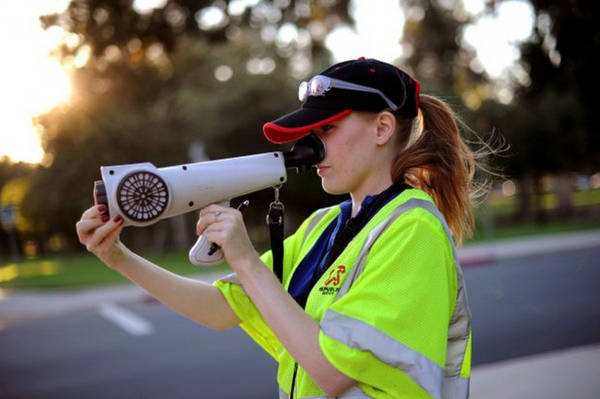CARPINTERIA, Calif. – In a 5-0 vote on Wednesday, the county Planning Commission endorsed the most consequential changes to the county’s cannabis ordinance to date, recommending that all indoor growers be required to install advanced carbon filters, a state-of-the-art clean air technology, in each of their greenhouses.
The “skunky” smell of pot, the commission said, must stop at the property line of these operations.
If the recommendation is adopted by the county Board of Supervisors on March 18, every greenhouse grower would have 12 months from that date — or until the date of state Coastal Commission approval, if it comes after that initial 12-months — to install the carbon filters, generally known as “scrubbers,” or an equivalent clean-air technology. Growers experiencing supply chain problems or delays in power upgrades could apply for “hardship extensions.”
All but one of the cannabis greenhouse operations in the county are clustered in the Carpinteria Valley just beyond the city limits of Carpinteria, a small and once-sleepy beach town. Of 27 greenhouse “grows” that are permitted there, 20 are currently under cultivation, and of these, only seven are equipped with scrubbers. The total acreage permitted for cannabis in the valley is 138 acres, or about 100 football fields worth. (There is one cannabis greenhouse operation on Dominion Road east of Orcutt.)
Since mid-2018, Carpinterians have filed 3,900 odor complaints with the county about the pungent smell of pot, but it has been impossible to enforce them. The current ordinance bans the smell from being “experienced in residential neighborhoods,” but no one could prove which greenhouse operation was to blame.
“We have waited EIGHT LONG YEARS, while our homes have been filled with the disgusting stench on a daily basis,” Wendy Spencer wrote to the commission, employing capital letters and urging “no more delays to mandatory odor controls.”
“Picture, after a lovely rain, opening the window to nasty odor or waking up EVERY SINGLE MORNING to the stench; or getting in your new car, which is sitting in the garage, and you get to your destination, realizing it still stinks in your car. We can’t catch a break here, and it’s wrong.”
For some of the commissioners, Wednesday’s vote was a long time coming. Several have been on the front lines ever since the cannabis ordinance went into effect, fielding roomfuls of angry residents and dozens of greenhouse project appeals by Concerned Carpinterians and the Santa Barbara Coalition for Responsible Cannabis, two groups that have advocated for stronger regulations for the industry.
In the past, the commission would recommend tougher cannabis rules, only to be overruled by the board. This January, though, with Supervisor Roy Lee, a former Carpinteria councilman, in the First District seat, replacing Das Williams, an architect of the cannabis ordinance, the board directed the commission to hold hearings on an across-the-board requirement for scrubbers in the valley, a longstanding demand of the citizens’ groups.
In addition to installing scrubbers, growers must shut down the “misting” systems that they’re currently using to neutralize the smell of cannabis after it escapes from the roof vents, the commission said Wednesday. In their complaints to the county, many Carpinterians have said that the “laundromat” smell of the misting system is just as offensive as the smell of pot.
“For the first time, really, we have an integrated whole idea of how to address odor,” Commissioner John Parke, who represents the Santa Ynez Valley, said. “… We’re making a big, bold move here. I’m very excited about it.”
“Hardship” Extensions?
The commission spent much of Wednesday’s hearing mulling the question of how and whether to extend the deadline for scrubber installation and shutdown of the misting systems beyond the initial 12-months, a period that could be prolonged by the state Coastal Commission. A number of residents urged a shorter six-month or three-month deadline for compliance, with no extensions.
“The growers will push this to the max: that’s why we’re here,” said Paul Roberts, a La Mirada Drive resident who said he had filed more than 100 complaints about the smell of pot. “They’ve known this was coming. Don’t give them any more time.”
The commission itself was split on whether to grant “hardship extensions” of the 12-month deadline for growers who might be experiencing delays in ordering the scrubbers or processing power upgrades. Jared Ficker, a spokesman for CARP Growers, an industry group, said, “Getting a simple electrical permit often is taking up to and in excess of six months.”
In the end, the commission voted 3-2 for allowing hardship extensions of up to 12 months beyond the initial 12 — and, for special cases, even longer. All extensions could be appealed, but the commission was divided as to whether the commission or the board should make the final decision.
South Coast commissioners Laura Bridley of Goleta and Mike Cooney, who represents the Carpinteria Valley, voted against allowing any hardship extensions.
“Let’s get the word out that you’d better get your scrubbers,” Cooney said.
In a written message to the press, Laura Capps, chair of the Board of Supervisors, warned that growers should not expect much leeway from the county.
“We are now moving swiftly on action that has been long overdue: requiring the best solution to reduce the cannabis odor that has harmed Carpinterians for years,” she stated.
“Once the board takes action on March 18th, those in the industry who have yet to install carbon scrubbers will need to do so. Several already have. It will be a high bar for me to grant any extensions to this overdue and commonsense requirement. The cannabis industry has known for years that this type of technology is the most effective and has already had plenty of time and financial resources to solve the problem.”
Scrubbers in Use
In late 2022, a test conducted in the Carpinteria Valley showed that an advanced model of carbon scrubbers developed by the Envinity Group, an air purification engineering firm in the Netherlands, could eliminate 84 percent of the smell of pot, on average, before it escaped from the open vents on the greenhouse roof.
That same year, Ed Van Wingerden, the owner of Ever-Bloom, an 11-acre cannabis greenhouse operation at 4701 Foothill Rd., installed 110 Envinity scrubbers to settle a coalition lawsuit, spending more than $2 million. The current price of an Envinity scrubber is $22,000.
In 2021, Cindy and David Van Wingerden, owners of CVW Organic Farms, aka Farmlane, at 1400 and 1540 Cravens Lane, became the first in the valley to install scrubbers in their greenhouses. They have 5.6 acres under cultivation and are using 18 units developed by Byers Scientific, an industrial odor management firm founded by Marc Byers of Summerland.
On Wednesday, Michael Head, the firm’s chief operating officer, told the commission that the Byers scrubbers had been “a resounding success” and said that CVW, located close to urban neighborhoods, “has not received a single odor complaint” since they were installed. The Van Wingerdens are in the process of adding 27 new Byers scrubbers at CVW, he said.
Ficker reminded the commission that some of the valley growers themselves had helped develop the new technologies.
“If we roll up our sleeves and get carbon scrubbers installed in all these facilities, we look forward to that improvement for our community,” he said.
The “Whole Idea”
Carbon scrubbers are expected to eliminate much of the odor that lingers in hot spots around the valley, the commissioners said. But they recommended a set of additional measures to ensure a good result.
Growers would have to submit new odor control plans to the county, certified by a California-licensed professional engineer, showing the type and number of scrubbers to be placed in each greenhouse.
The county would conduct quarterly inspections of the equipment during the first year of installation and annual inspections after that. The scrubbers would be equipped with “run-time” meters showing that they were operating correctly.
Finally, trained county Planning & Development staffers would test for the smell of pot on the property lines of cannabis greenhouses in response to residents’ complaints — specifically, three complaints within 60 days or five within a 24-hour period.
(The late Dan Blough, the gruff but generous-hearted commissioner from Santa Maria, would have been pleased. Barely able to contain his frustration, he repeatedly tried and failed to convince Planning & Development that it was critical to draw up a rule prohibiting the smell of pot beyond greenhouse property lines. He would tell applicants: “If you can’t suppress odor at the property line, I’m not interested in approving the project.”)
To perform the testing, the county would use Nasal Rangers, hand-held devices that look like hair dryers, to sniff the air. The odor threshold for compliance at the property line would be set just below the “nuisance” level, defined as the level at which the smell is “noticeable” but not “faint.”

A number of residents on Wednesday and at previous hearings urged the commission to set the odor threshold at zero. Noting that the Nasal Ranger is best used indoors, they worried that it wouldn’t work well in the valley, where the growers often open their roof vents to let hot air escape in the evenings or early mornings. By the time the county arrives with Nasal Rangers, it will be too late, residents said.
Among the critics of the Nasal Ranger was the City of Carpinteria, which sent a letter urging the commission to set a lower odor threshold and adopt “a more advanced odor detection tool.”
On Wednesday, Cooney said, “I have a lot of skepticism about the Nasal Ranger value in this whole process.” He was not happy about the recommended odor threshold, either, he said, but he would vote for it.
“Given the technology we’re proposing to use, it may be the best we can do,” Cooney said. “It’s the best of a bad situation.”
24/7 Monitoring?
A number of residents also told the commission they were tired of filing complaints and wanted the growers themselves to bear the burden of odor monitoring.
“It would be far better to have continuous run-time measurements made at the roof vents,” said Anna Carrillo, a 52-year resident of the valley, a member of both the coalition and Concerned Carpinterians, and a frequent speaker at cannabis hearings. “There needs to be 24/7 monitoring and recording of odor violations by the cannabis operators.”
Such technology is available, but it’s expensive. VaporSafe, a gas chromatography service developed by Mark Kram of Goleta, is able to separate out the different chemical compounds in a plume of cannabis odor. The service has been used by neighbors, growers and attorneys in the valley to track how far the smell is traveling. The equipment can be placed near “grows” in response to residential odor complaints and, combined with wind conditions, can pinpoint where the smell is coming from.
VaporSafe costs about $2,000 per day for a short duration run. Kram has suggested that if 10 growers, for example, were able to share the expense of long-term monitoring, they would save on energy costs and wouldn’t be getting any odor complaints.
Finally, a sophisticated cannabis odor sensor has been developed by Environmental Monitoring Systems, a worldwide manufacturer of environmental products, in conjunction with the Envinity Group. This sensor can provide around-the-clock monitoring at the roof vents of greenhouses or along the property lines of a greenhouse operation. It is on the market for $55,000, and, according to EMS, Ever-Bloom is considering buying one.
Melinda Burns is an investigative journalist with 40 years of experience covering immigration, water, science and the environment. As a community service, she offers her reports to multiple publications in Santa Barbara County, at the same time, for free.
#Upping #Ante #Planners #Support #Tough #Odor #Controls #Cannabis #Greenhouse










Leave a Reply